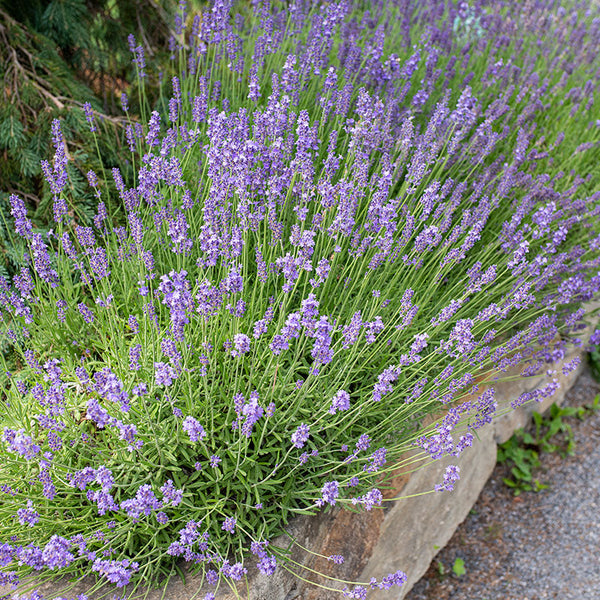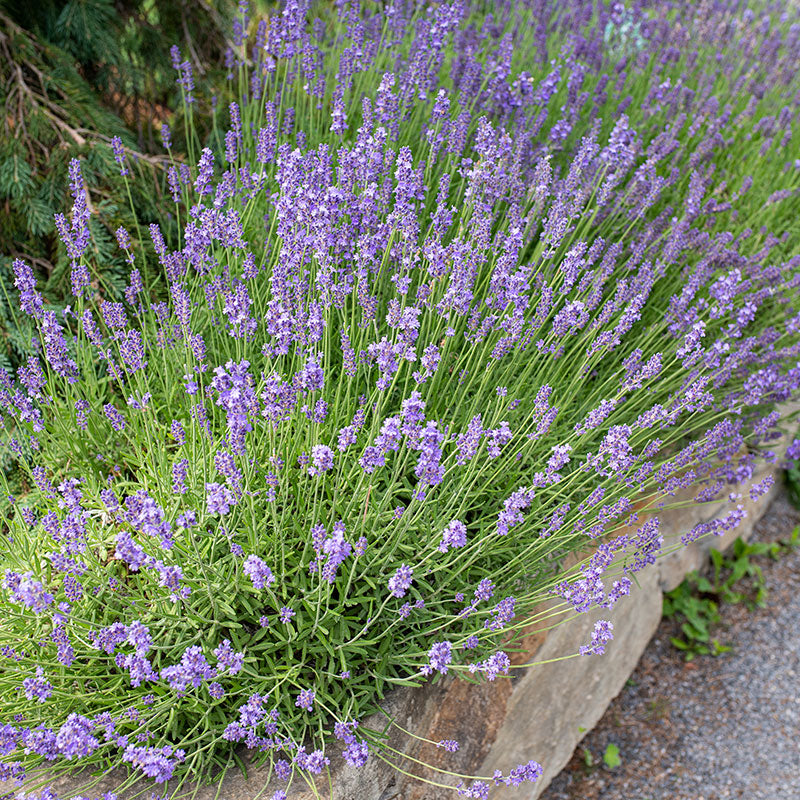SOWING INSTRUCTIONS
Depth:
Surface to barely cover
Starting Indoors:
Recommended. Sow indoors 8-10 weeks before last frost. Keep at 65-75°F. While not required, a brief moist chill period may improve germination.
Starting Outdoors:
Direct sow after last frost when soil is warm.
PLACEMENT & CULTIVATION
Lavender repels browsing deer and is a top bee-attracting plant, making it a great addition to vegetable gardens that need pollinators. Containers of hardy lavender are fragrant additions to outdoor sitting areas and create fragrant hedges in sunny, well-drained herb and dry border gardens. Lavender needs neutral to alkaline soils amended with sand and gravel and added gravel mulch in winter to aid drainage around the crowns. In early spring, cut two-year-old lavender back to about 2" above woody stems to new shoots, creating a bushy rounded form that will bloom on the new season's growth. Harvest flowers when they are barely opened and dry upside down for several weeks. Deadhead the spent blooms and trim lightly for some possible rebloom later in the season. Take cuttings after three years to replace old specimens with fresh, vigorously growing plants; however, lavender plants can be longer-lived with proper pruning. Lavender is an edible flower; when used sparingly, its perfumed flowers flavor honey and iced sorbets.
Watering Details:
Once established, water infrequently but deeply during especially dry spells.
Soil pH:
Neutral to alkaline. May benefit from addition of lime to soil.
Fertilizer:
Mix in a couple of inches of compost prior to planting if soil is especially poor; fertilizer will decrease the fragrance of the flowers.
Diseases & Pests:
Avoid fungal problems by spacing plants properly and planting them in a location that receives good air flow.
When to Cut for Bouquets:
Harvest when lower 1/3 has started to open.

































